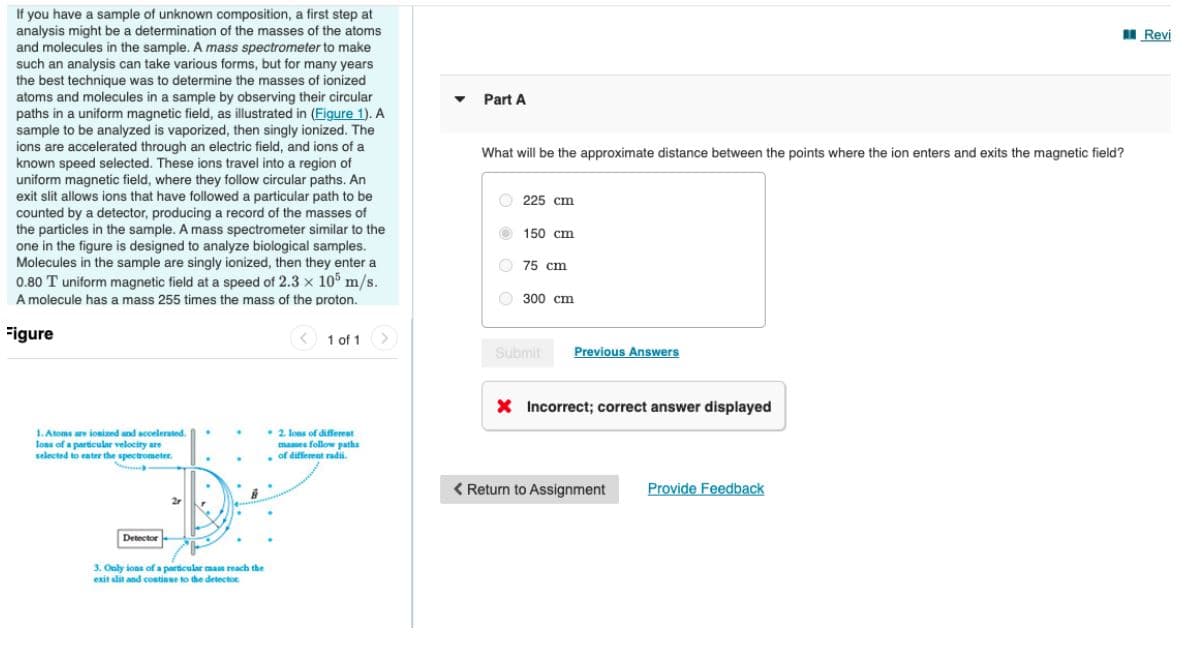Chapter8: Electromagnetism And Em Waves
Section: Chapter Questions
Problem 9Q
Related questions
Question

Transcribed Image Text:If you have a sample of unknown composition, a first step at
analysis might be a determination of the masses of the atoms
and molecules in the sample. A mass spectrometer to make
such an analysis can take various forms, but for many years
the best technique was to determine the masses of ionized
I Revi
atoms and molecules in a sample by observing their circular
paths in a uniform magnetic field, as illustrated in (Figure 1). A
sample to be analyzed is vaporized, then singly ionized. The
ions are accelerated through an electric field, and ions of a
known speed selected. These ions travel into a region of
uniform magnetic field, where they follow circular paths. An
exit slit allows ions that have followed a particular path to be
counted by a detector, producing a record of the masses of
the particles in the sample. A mass spectrometer similar to the
one in the figure is designed to analyze biological samples.
Molecules in the sample are singly ionized, then they enter a
0.80 T uniform magnetic field at a speed of 2.3 x 10° m/s.
A molecule has a mass 255 times the mass of the proton.
Part A
What will be the approximate distance between the points where the ion enters and exits the magnetic field?
O 225 cm
150 cm
75 cm
O 300 cm
Figure
1 of 1
Submit
Previous Answers
X Incorrect; correct answer displayed
1. Atoms are ionized and accelerated.
lons of a particular velocity are
selected to eater the spectrometer.
• 2 lons of difereat
mases follow paths
. of different radi.
< Return to Assignment
Provide Feedback
Detector-
3. Only ions of a particular mass reach the
exit alit and continse to the detector
Expert Solution
This question has been solved!
Explore an expertly crafted, step-by-step solution for a thorough understanding of key concepts.
This is a popular solution!
Trending now
This is a popular solution!
Step by step
Solved in 2 steps

Knowledge Booster
Learn more about
Need a deep-dive on the concept behind this application? Look no further. Learn more about this topic, physics and related others by exploring similar questions and additional content below.Recommended textbooks for you



Glencoe Physics: Principles and Problems, Student…
Physics
ISBN:
9780078807213
Author:
Paul W. Zitzewitz
Publisher:
Glencoe/McGraw-Hill



Glencoe Physics: Principles and Problems, Student…
Physics
ISBN:
9780078807213
Author:
Paul W. Zitzewitz
Publisher:
Glencoe/McGraw-Hill